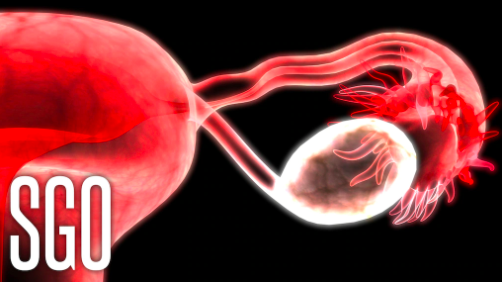Ixabepilone plus bevacizumab yielded responses in a third of patients.
By Ian Ingram
Combination treatment with a microtubule stabilizing agent plus bevacizumab (Avastin) proved active for patients with recurrent chemotherapy-resistant ovarian cancer, a randomized phase II trial found.
Median progression-free survival (PFS), the study’s primary endpoint, was superior with the combination of ixabepilone (Ixempra) plus bevacizumab, as compared with single-agent ixabepilone, an epothilone B analog that is thought to retain efficacy in paclitaxel-resistant disease (5.5 vs 2.2 months; HR 0.33, 95% CI 0.19-0.55), reported Dana Roque, MD, of University of Maryland Medical Center in Baltimore.
One-third of patients responded to ixabepilone plus bevacizumab versus 8% with ixabepilone (P=0.004), according to findings presented at the virtual Society of Gynecologic Oncology (SGO) annual meeting.
“Heavily pretreated platinum-resistant or -refractory ovarian cancer patients lack therapeutic options,” Roque said during her presentation. “Weekly ixabepilone and biweekly bevacizumab is well tolerated and effective, even in the platinum-refractory setting.”
While the trial was not powered to detect differences in overall survival, patients on ixabepilone-bevacizumab lived a median 10 months from the start of treatment versus 6 months with ixabepilone alone (HR 0.52, 95% CI 0.31-0.87). Prior receipt of bevacizumab did not appear to have an effect on PFS or overall survival, nor did age, number of prior therapies, performance status, or histology.
TUBB3 staining, thought to be a potential marker of response, was not correlated with response rates or disease control, said Roque.
Ixabepilone gained FDA approval in 2007 for pretreated breast cancer, and has shown activity in other tumor types, including ovarian cancer. Bevacizumab is an approved agent in ovarian cancer.
Roque said the study was modeled after the AURELIA trial, which showed that bevacizumab plus chemotherapy was superior to chemotherapy alone in platinum-resistant ovarian cancer. The current study, however, included a far more heavily treated patient population, and with ixabepilone-bevacizumab produced similar rates of response as seen with bevacizumab-chemotherapy in AURELIA (33% vs 27%, respectively).
SGO discussant Thomas Herzog, MD, of the University of Cincinnati Cancer Institute in Ohio, pointed out that paclitaxel arms of AURELIA achieved responses of 28.8% with chemotherapy alone and 51.7% with the addition of bevacizumab, and the combination was associated with a median PFS of 10.4 months.
But he agreed that the current trial involved a “much more heavily pretreated” group than AURELIA, which was restricted to no more than two prior lines of treatment and had no platinum-refractory patients, as compared with 18% in the current study.
“This was a very exciting trial, the efficacy looks very promising,” Herzog said, though he added that the lower bounds of the confidence intervals might still be similar to what is seen with conventional agents and that it typically takes a couple of trials to sway guideline committees.
The phase II study randomized 76 women with advanced platinum-resistant or -refractory epithelial non-mucinous ovarian cancer, fallopian tube cancer, or primary peritoneal cancer at two U.S. centers. Eligibility requirements included at least three cycles of paclitaxel, and patients were stratified by receipt of prior bevacizumab and study site. Over 28-day cycles, patients received either ixabepilone 20 mg/m2 (on days 1, 8, and 15) or ixabepilone plus bevacizumab 10 mg/kg (on days 1 and 15), with both delivered intravenously.
Median patient age was 67 years, 76% of patients were white, and 16% were Black, with the vast majority having serous tumor type (83%). About half had received four or more lines of prior therapy and 55% had previously received bevacizumab. In the monotherapy arm, 11% were considered refractory to chemotherapy versus 26% in the combination arm.
Serious adverse events occurred in 36% of patients on the combination treatment and 32% of those on single-agent ixabepilone. Hypertension was significantly more common in the combination group (36% vs 8%), as was peripheral neuropathy (51% vs 19%), and one patient on ixabepilone-bevacizumab experienced bowel perforation.
Dose reductions were required in 59% and 64% of patients in the monotherapy and combinations arms, respectively, with dose-limiting toxicities including peripheral neuropathy, neutropenia, and fatigue. Roque suggested a starting ixabepilone dose of 16 mg/m2 to limit toxicity and dose reductions.
At data cutoff, 78% of patients in the ixabepilone arm had died versus 72% of those in the ixabepilone-bevacizumab arm.
Limitations cited by Roque included incomplete immunohistochemistry for TUBB3 staining, a lack of a bevacizumab control arm, and that patients weren’t stratified by their extent of prior taxane treatment.
This article was published by MedPage Today.


